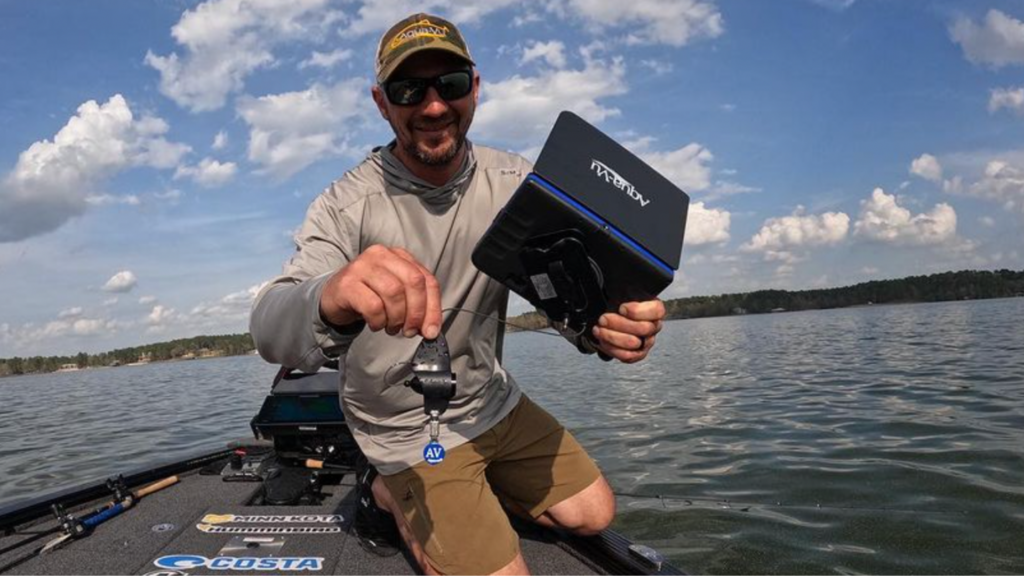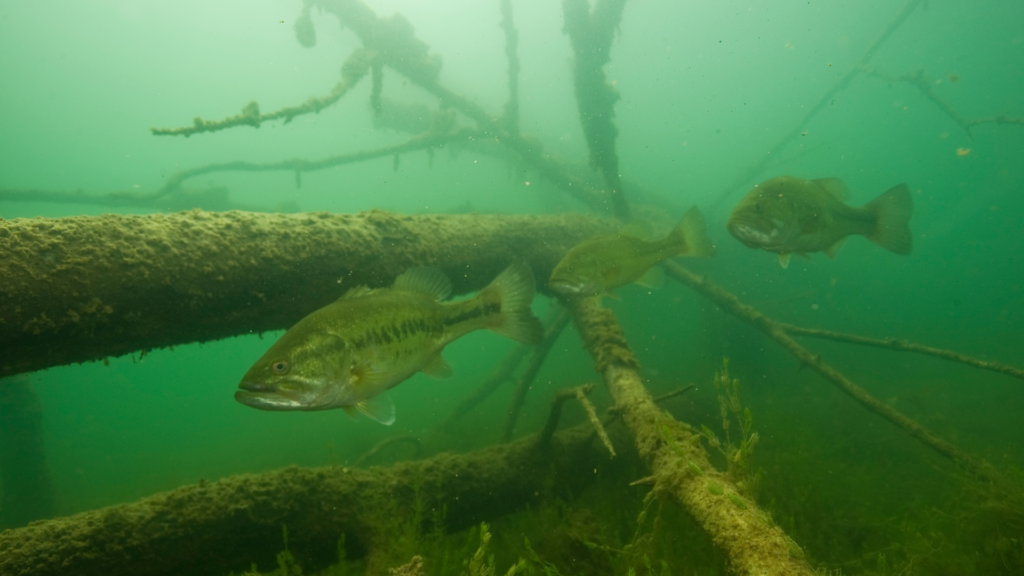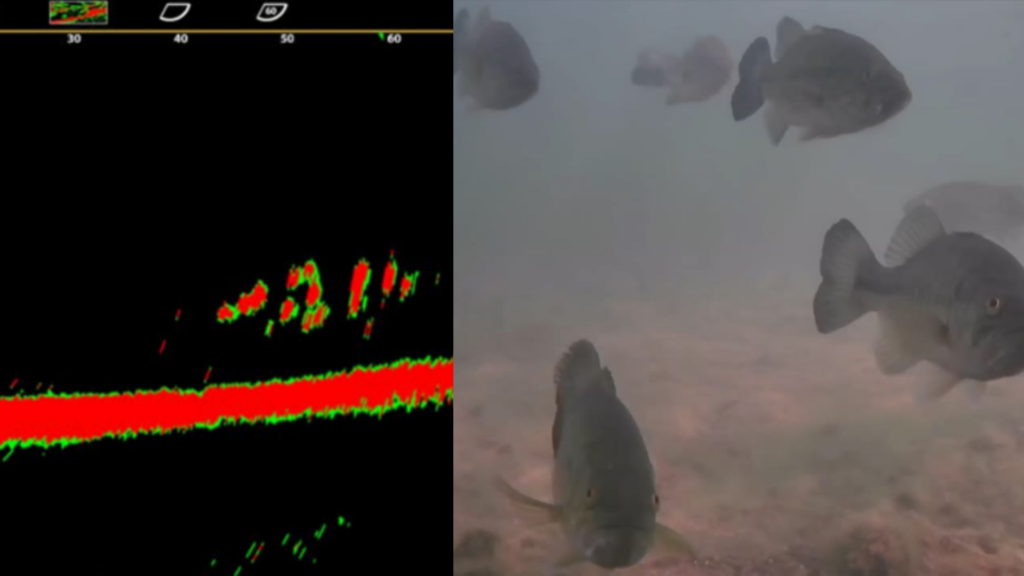“It’s always in my boat,” affirms Bassmaster Elite Series angler, Jeff “Gussy” Gustafson, referring to a particular fish-finding tool that’s been popping up in recent conversations among hardcore bass fans. You might be tempted to believe the ‘it’ in Gustafson’s statement refers to forward-facing or 360-degree sonar. But you’d be incorrect.
“From Canada’s Lake of the Woods to Lake Eufaula, Alabama, an Aqua-Vu underwater camera plays a huge role in my tournament pre-fishing,” notes Gustafson, fresh off his first Bassmaster Elite Series win at the Tennessee River. “The way things were set up at the Tennessee River in 2019 didn’t allow me to deploy the camera. But I really wish I had because it would have shown me smallmouths right away and helped me understand how the fish were stationed in the current and relative to the big rocks.”

For the first two days of pre fishing for the Classic, Gussy found himself casting for shallow largemouths—a frustrating endeavor that left nearly every Bassmaster competitor scratching their heads. During the final afternoon of prefishing, the Ontario, Canada based bass pro drifted out into a deeper canal area separating two larger reservoirs and on a tip from a friend, decided to drop a jig and plastic bait below his boat.
“Side imaging showed a lot of really good rock and concrete slabs in the area, but I never saw a bass on sonar until I put the bait right into the transducer cone and had a smallmouth rise up and eat it,” he observes. “I’m hoping someone will go back out there with an Aqua-Vu, because I’d really like to know what they see—how many bass versus other fish are there, and what the cover really looks like.”
At other current-dominated Bassmaster Elite Series tourneys, however, Gustafson studied the underwater terrain first-hand, gleaning rare discoveries that would put him well into the money.
“A lot of the anglers have figured out that an Aqua-Vu is a mandatory piece of equipment at places like the St. Lawrence River,” believes Gussy. “These clear water rivers are perfect for a camera because the fish don’t show up well on electronics and the current lets you do long drifts, covering tons of real estate with the lens acting as your eyes below your boat.
“At the last St. Lawrence Bassmaster Elite event, I’d drift these long deepwater stretches and find little hard-to-find spots holding pods of big smallmouths. Every so often, you’d spot these isolated boulders, and usually, these current breaks would hold a few bass. But it was the ones attracting 5 or 10 fish, including a few real ‘kongs,’ where I’d drop a dot (GPS waypoint).
“When the tourney started, I went back to these spots and it was like, one-hundred percent, you’d catch ‘em. A lot of people are probably ticked at me for sharing this tip, but it’s pretty hard to hide what you’re doing when you’ve got a camera cable over the side of the boat, staring at a screen.”

Gustafson, who gimbal-mounts an Aqua-Vu HD7i Pro in his console, notes that all Aqua-Vu models can also be used as a portable unit, as well. “One of the coolest little tools for quickly checking out a brush pile, isolated log or especially for fish species ID is an Aqua-Vu micro Revolution,” he explains. “The entire unit—camera and screen— isn’t much bigger than your phone, so it fits into a glove box or a tackle bag and has the same type of rechargeable battery. Deploying the optics and checking out fish species or a piece of cover takes as little as a minute or two, and shows you things you’d never learn with sonar alone.”
Gustafson continues: “The micro camera is perfect for places where you’ve got bass on deeper structure, like brush piles or other isolated cover.
“Few years ago, I had a really good tourney at Cayuga Lake in New York, using the Aqua-Vu to pinpoint big bass on little pieces of isolated cover. I’d side image and drop dots on every stump, log or little rock I found. On the last day of practice, instead of casting and burning my fish, I simply dropped the camera on all these waypoints, and identified the juice—the best logs, stumps or rocks holding the biggest fish. On the sweet spots, I’d observe three or more 4-pound smallmouths living there, or a small group of 4-pound largemouths. I weighed 80 pounds of bass that week and held a 5-pound lead going into the last day before barely being edged on the final day.”
While an underwater camera is a no-brainer fish finding tool in clear water, Gustafson has also benefited from its real-world advantages in stained water conditions. “Lake Eufaula in Alabama is a long way from the clearest lake, but I’ve found that even here, an Aqua-Vu proves its value. Especially for checking deep brush piles, the camera is huge. On Eufaula, I’ve used it a lot in 22 to 24 feet of water. You might not see the entire brushpile all at once, but the picture is plenty clear enough to show you fish species and their size.

“What’s also awesome is the camera’s ability to reveal the sweet spots in a brush pile,” he continues. “You’ll quickly see and discover things like the side with the thickest branches, or the little section where most of the bass are clustered, or even little clearings in a certain part of the brush where it’s easier to get a bait into.”
Gustafson is often asked about determining the sizes of individual bass, on screen. “There’s a learning curve with this, no doubt,” he admits. “Even small bass can look big when they approach the lens. But you start to recognize certain anatomical differences in the big bass—fin shape, body proportions, or other things like the disproportionate size of a fish’s head, jaw or belly. Pretty soon, you just know when you’re looking at a kong versus another 2 pounder. That’s when things really get interesting.
